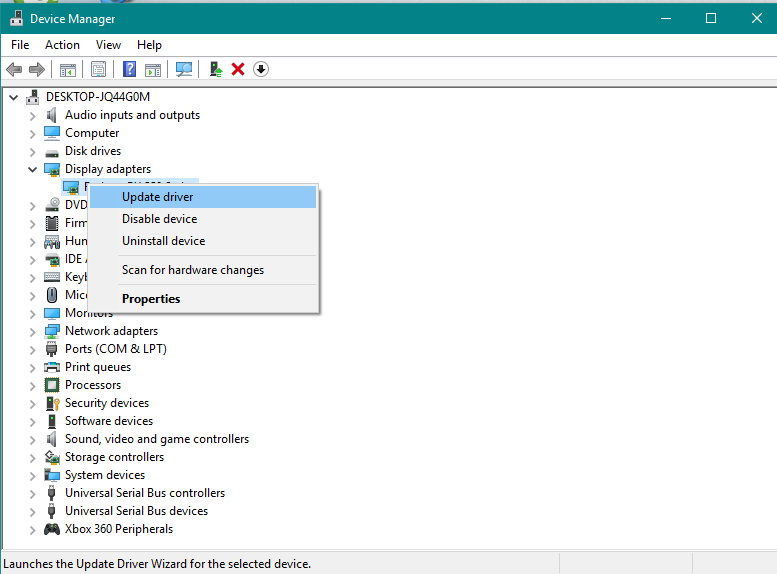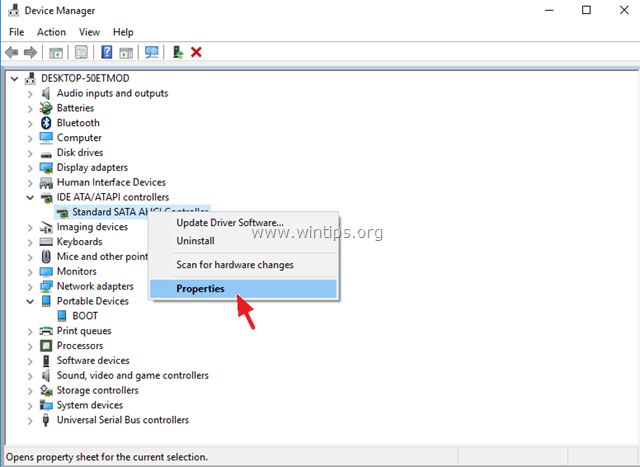
- IDE ATA ATAPI CONTROLLERS DRIVER DOWNLOAD WINDOWS 10 PRO
- IDE ATA ATAPI CONTROLLERS DRIVER DOWNLOAD WINDOWS 10 SOFTWARE
Some Sound Blaster 16 boards (CT2940 for example) provided an additional IDE interface to computers that had no spare ATA-ports for a CDROM, though the additional drive interface typically only supported one device rather than two, it typically only supported CD ROM drives, and it usually could not support additional hard drives. With the development of the CD-ROM, many computers could not support it since both devices of the one channel were already used. Due to its popularity and wide support, the Sound Blaster 16 is emulated in a variety of virtualization and/or emulation programs, such as DOSBox, QEMU, Bochs, VMware and VirtualBox, with varying degrees of faithfulness and compatibility.Įarly Intel PCs built after the IBM PC/AT typically only included support for one ATA interface (which controlled up to two ATA devices.) As computer needs grew it became common for a system to need more than 1 ATA interface. Rich Sorkin was General Manager of the global business during this time, responsible for product planning, product management, marketing and OEM sales. Creative's audio revenue grew from US$40 million per year to nearly US$1 billion following the launch of the Sound Blaster 16 and related products. By setting an onboard jumper, the user could select between line-level output (bypassing the on-board amplifier) and amplified-output.

Later models (typically ones with ViBRA chips) used the also then-widely used TDA1517 amplifier IC. The Sound Blaster 16 featured the then widely used TEA2025 amplifier IC which, in the configuration Creative had chosen, would allow approximately 700 milliwatts (0.7 watts) per channel when used with a standard pair of unpowered, 4-Ohm multi-media speakers. The ASP was a SGS-Thomson ST18932 DSP core with 16K of program RAM and 8K of data RAM. As a result, this chip was generally ignored by the market.
IDE ATA ATAPI CONTROLLERS DRIVER DOWNLOAD WINDOWS 10 SOFTWARE
Software needed to be written to leverage its unique abilities, yet the offered capabilities lacked compelling applications. The ASP or CSP chip added some new features to the Sound Blaster line, such as hardware-assisted speech synthesis (through the TextAssist software), QSound audio spatialization technology for digital (PCM) wave playback, and PCM audio compression and decompression. When a daughterboard, such as the Wave Blaster, Roland SCB-7, Roland SCB-55, Yamaha DB50XG, Yamaha DB60XG was installed on the Sound Blaster, the Wave Blaster behaved like a standard MIDI device, accessible to any MPU-401 compatible MIDI software. The SB16's MPU-401 emulation was limited to UART (dumb) mode only, but this was sufficient for most MIDI software.


IDE ATA ATAPI CONTROLLERS DRIVER DOWNLOAD WINDOWS 10 PRO
The Sound Blaster 16 retained the Pro's OPL-3 support for FM synthesis, and was mostly compatible with software written for the older Sound Blaster and Sound Blaster Pro sound cards. For optional wavetable synthesis, the Sound Blaster 16 also added an expansion-header for add-on MIDI- daughterboards, called a Wave Blaster connector, and a game port for optional connection with external MIDI sound modules. Sound Blaster 16 (June 1992), the successor to the Sound Blaster Pro, introduced CD-quality digital audio to the Sound Blaster line.


 0 kommentar(er)
0 kommentar(er)
